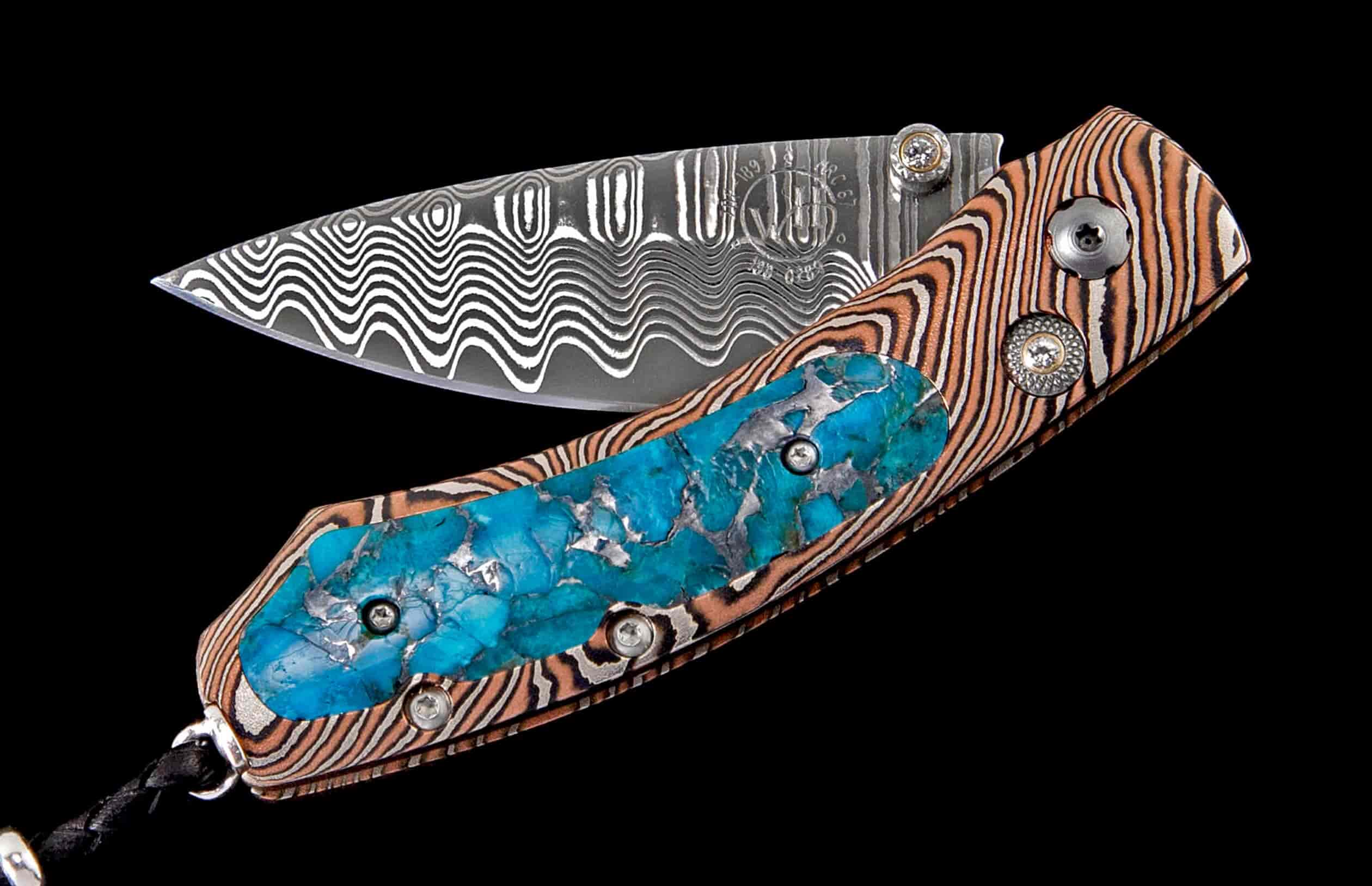Lowell
Pocketknife featuring mokume gane, kingman turquoise, and 'wave' damascus blade
Edition of 100 pieces
$1,250.00
Product Details
The Kestrel 'Lowell' features a beautiful frame in 'Twist' mokume by Mike Sakmar, inlaid with a mesmerizing piece of zinc-matrix turqoise. The blade is 'Wave' damascus with an extra strong core in ZDP-189; the one-hand button lock and the thumb stud are set with white topaz. The Kestrel is a compact but versatile folder that works and presents beautifully in any situation; the design, which offers a deep finger groove at the intersection between the handle and blade, makes this knife remarkably comfortable in the hand while being very small and easy to carry. The ‘Lowell’ features some of the most exotic materials and hand-forged metals that are the hallmark of William Henry's collections; a timeless heirloom to be proudly worn and used for a lifetime before being handed-down to another generation.Product SKU: B09 LOWELL
Features & Specs
- One-hand button lock system
- Leather carrying case
- Shipped in an elegant wood presentation box
- Dimensions:
Blade 2.13" (54.1mm)
Handle 2.88" (73.1mm)
Overall open 5.00" (127mm)




